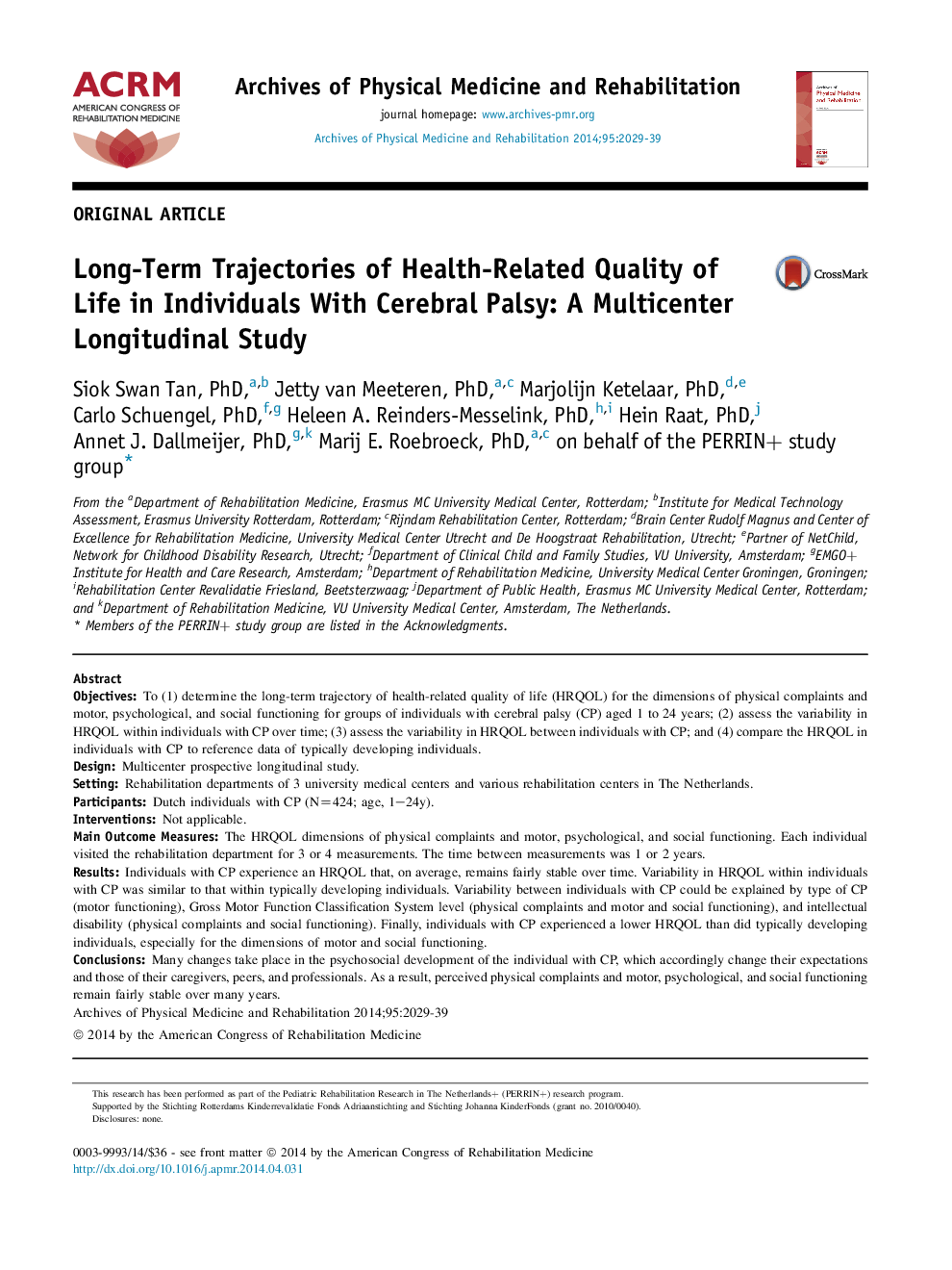| کد مقاله | کد نشریه | سال انتشار | مقاله انگلیسی | نسخه تمام متن |
|---|---|---|---|---|
| 3448576 | 1595691 | 2014 | 11 صفحه PDF | دانلود رایگان |
ObjectivesTo (1) determine the long-term trajectory of health-related quality of life (HRQOL) for the dimensions of physical complaints and motor, psychological, and social functioning for groups of individuals with cerebral palsy (CP) aged 1 to 24 years; (2) assess the variability in HRQOL within individuals with CP over time; (3) assess the variability in HRQOL between individuals with CP; and (4) compare the HRQOL in individuals with CP to reference data of typically developing individuals.DesignMulticenter prospective longitudinal study.SettingRehabilitation departments of 3 university medical centers and various rehabilitation centers in The Netherlands.ParticipantsDutch individuals with CP (N=424; age, 1–24y).InterventionsNot applicable.Main Outcome MeasuresThe HRQOL dimensions of physical complaints and motor, psychological, and social functioning. Each individual visited the rehabilitation department for 3 or 4 measurements. The time between measurements was 1 or 2 years.ResultsIndividuals with CP experience an HRQOL that, on average, remains fairly stable over time. Variability in HRQOL within individuals with CP was similar to that within typically developing individuals. Variability between individuals with CP could be explained by type of CP (motor functioning), Gross Motor Function Classification System level (physical complaints and motor and social functioning), and intellectual disability (physical complaints and social functioning). Finally, individuals with CP experienced a lower HRQOL than did typically developing individuals, especially for the dimensions of motor and social functioning.ConclusionsMany changes take place in the psychosocial development of the individual with CP, which accordingly change their expectations and those of their caregivers, peers, and professionals. As a result, perceived physical complaints and motor, psychological, and social functioning remain fairly stable over many years.
Journal: Archives of Physical Medicine and Rehabilitation - Volume 95, Issue 11, November 2014, Pages 2029–2039
